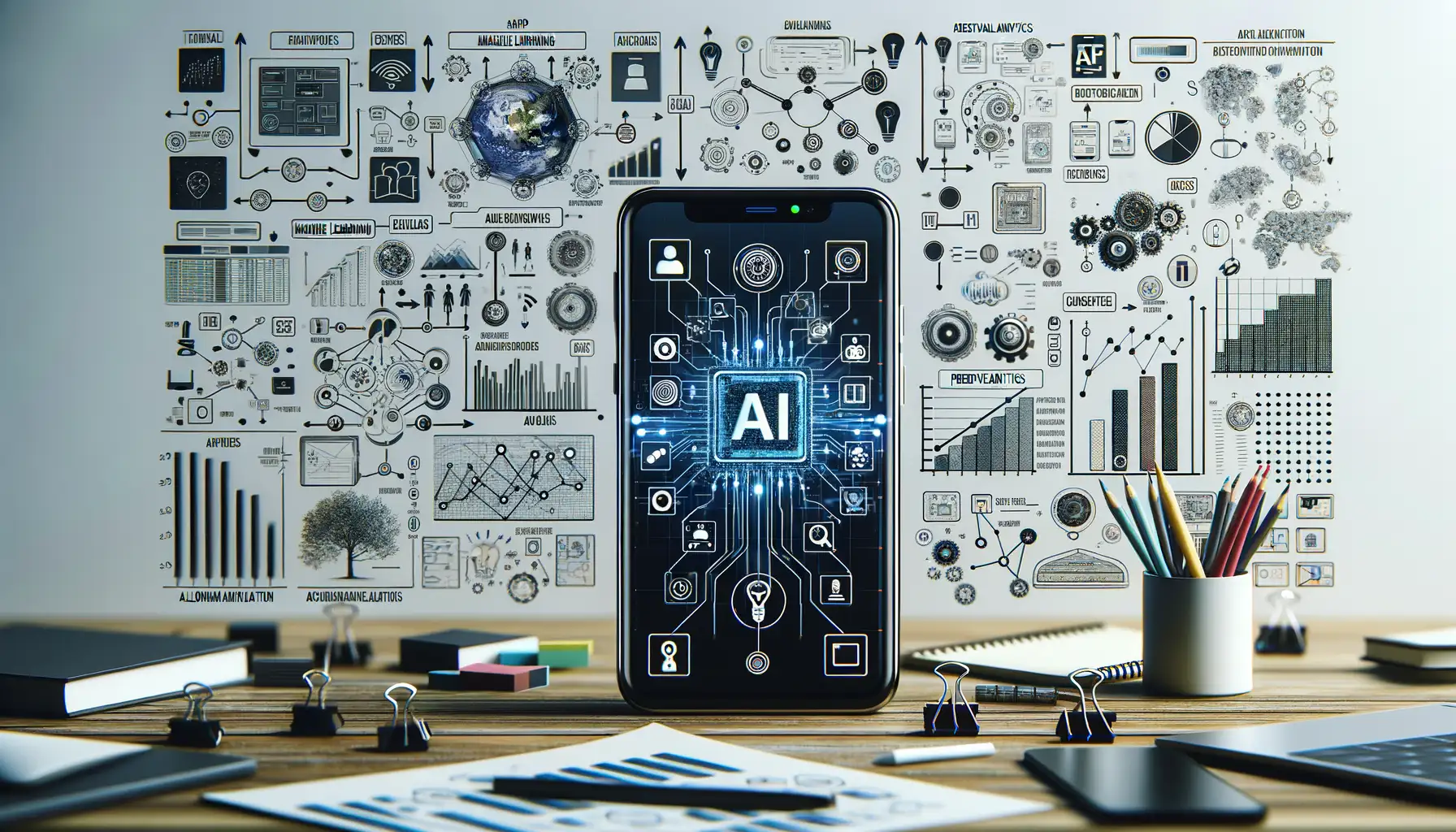The Benefits of AI for Enhancing User Engagement
Transforming Interaction Through AI Magic
Picture this: your app greets users like an old friend who knows exactly what they’re looking for. That’s the power of AI. It doesn’t just enhance user engagement—it redefines it. By learning user preferences over time, AI becomes like a digital concierge, delivering precisely curated experiences that feel less mechanical and more human.
How? For starters, think of recommendation engines. Apps like Netflix and Spotify use AI to anticipate what you’ll enjoy next, creating moments of delight when the perfect show or song pops up. Then there’s dynamic content adjustment. AI adjusts everything—from colors and layouts to push notifications—based on user behaviors. It’s like having a chef whip up your favorite dish without you even saying a word.
- Instant Feedback: AI analyzes user interactions in real-time, letting apps tweak experiences on the fly.
- Hyper-Personalization: Expect suggestions tailored to users’ habits, quirks, and even moods.
With AI, your app doesn’t just talk—it listens, learns, and grows smarter with every tap and swipe. Because let’s face it—everyone loves feeling understood, even by their tech.
AI-Powered Personalization Strategies for Apps

Tailoring Experiences in Real-Time
Imagine this: Your app feels like it’s not just built for your users, but for *them specifically*. That’s the magic of AI-powered personalization. By analyzing user behavior and preferences, AI serves up tailor-made experiences that make people think, “Wow, this app really gets me.”
Here’s how it works. AI dives into data—clicks, swipes, searches, even the time of day someone engages. From there, it pulls patterns others might miss, crafting custom recommendations or features. For instance, a fitness app could send a gentle “You can do it!” notification before someone’s usual workout time, or a shopping app might showcase products you were *just* daydreaming about.
Isn’t that better than generic content tossed at the wall to see what sticks? Personalization keeps users coming back because it makes them feel valued—and we all love feeling seen.
Using AI to Analyze and Predict User Behavior

Unveiling the Power of Predictive Insights
Imagine if your app could anticipate user behavior like a friend who always knows exactly what you’re craving. That’s the magic of harnessing AI-driven analytics. By diving deep into user data—clicks, swipes, and even pauses—AI can uncover patterns that reveal not only what users want right now but what they’re likely to want next. It’s like having a crystal ball, except it runs on algorithms instead of fairy dust.
Here’s where it gets really exciting: AI doesn’t just analyze; it predicts. For instance, if a fitness app notices a user skipping workouts on weekends, it can proactively suggest quick, no-equipment exercises for cozy mornings. Or think of an e-commerce app that nudges a user with personalized recommendations just before payday—AI studies not only habits but timing too.
- Behavior clustering: Group users based on shared actions like frequent purchases or abandoned carts.
- Sentiment analysis: Detect user mood from feedback and adapt their in-app experience accordingly.
- Churn prediction: Spot users at risk of leaving and strategically re-engage them with offers.
Ultimately, these predictive insights don’t just elevate the user experience—they create moments of connection so seamless, they feel almost magical.
Implementing Chatbots and Virtual Assistants

Why Chatbots Are Your New Best Friends
Imagine opening an app and being greeted by a friendly virtual assistant that knows exactly how to help you. That’s the magic of integrating chatbots and virtual assistants into your app. These aren’t just cold, mechanical tools; they’re like digital concierges, ready to welcome users with personalized support and instant answers. Whether it’s helping someone pick the perfect gift, troubleshoot their subscription, or answer FAQs at 2 AM, chatbots never sleep.
But let’s not stop at the basics. Today’s AI-powered bots can engage in meaningful conversations, adapt to different tones of voice, and even crack the occasional joke! Want your finance app to feel a little more human? A chatbot with a touch of humor can transform “boring budgeting” into something users actually look forward to.
- Immediate support: No more waiting on hold for customer service.
- Scalable solutions: Handle hundreds of queries simultaneously without breaking a sweat.
- User delight: Who doesn’t smile when a bot gets their quirky question right?
Making It Feel Human
The secret to a successful chatbot is building one that doesn’t feel… well, like a robot. Choose conversational language over stiff responses. For instance, instead of saying, “Request denied due to error,” try something like, “Whoops, that didn’t work! Let’s try again.” Also, consider adding **voice assistants**, like Alexa-style integrations, for hands-free interactions—users will love the convenience.
A great example? Picture a fitness app where users can ask, “What’s a good post-workout snack?” The virtual assistant could pull up recipes, calorie counts, and even a motivational pep talk for the next session. Now that’s user engagement done right!
Best Practices for Integrating AI into App Design

Make AI Seamlessly Part of the User Experience
Integrating AI into app design isn’t just about sprinkling cool features—it’s about making users feel like the technology was built just for them. If done right, AI can melt into the interface so invisibly that users don’t even realize it’s there. One of the golden rules? Don’t make AI feel like a robot overlord. Instead, let it be the helpful sidekick your users didn’t know they needed.
For example, imagine an exercise app that adapts workouts in real-time based on heart rate data. That’s not just “smart,” it’s almost like having a personal trainer in your pocket. Think seamless suggestions rather than intrusive pop-ups, and organic flows rather than gimmicky features.
- Simplicity is key: Too many AI-driven elements can overwhelm users. Choose features that genuinely enhance the experience.
- Provide transparency: Let users know how AI helps. A quick note like, “Recommended for you based on your preferences,” builds trust.
Build with Flexibility and Empathy
AI isn’t one-size-fits-all, and neither are your users. Keep adaptability front and center. For instance, a language-learning app might use AI to track progress and adjust lessons dynamically. But here’s the kicker—always leave room for humans to override. Maybe someone loves old-school flashcards over adaptive quizzes. Let them choose.
And don’t forget empathy! Ever been bombarded by irrelevant recommendations? It’s frustrating. Aim for AI that feels socially intelligent. A weather app could skip suggesting sunglasses during a raging thunderstorm. The more human your AI behaves, the more engaging your app becomes.
